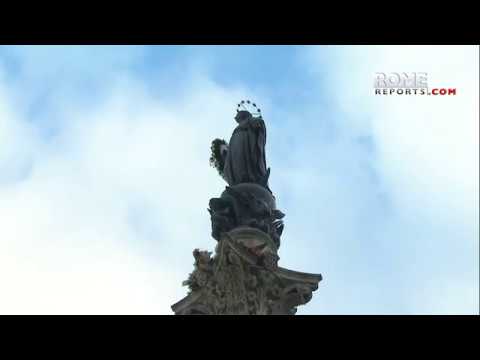Contents:


Each item on the face of the Balance Sheet and Statement of Profit and Loss shall be cross-referenced to any related information in the notes to accounts. In preparing the Financial Statements including the notes to accounts, a balance shall be maintained between providing excessive detail that may not assist users of financial statements and not providing important information as a result of too much aggregation. Loans due by directors or other officers of the company or any of them either severally or jointly with any other person or amounts due by firms or private companies respectively in which any director is a partner or a director or a member shall be separately stated. In order to meet all 3 principles at the same time, a new section is added to P&L called OCI where all such MTM adjustments are reported below the profit after tax .
Olink : Annual report and consolidated financial statements – Form 6-K – Marketscreener.com
Olink : Annual report and consolidated financial statements – Form 6-K.
Posted: Mon, 27 Mar 2023 11:18:48 GMT [source]
When a group has an overseas subsidiary a group exchange difference will arise on the re-translation of the subsidiary’s goodwill and net assets. In accordance with IAS 21 such exchange differences are recognised in OCI and so accumulate in OCE. On the disposal of the subsidiary, IAS 21 requires that the net cumulative balance of group exchange differences be reclassified from equity to P&L as a reclassification adjustment – ie the balance of the group exchange differences in OCE is transferred to SOPL to form part of the profit on disposal. Profit or loss attributable to ‘non-controlling interest’ and to ‘owners of the parent’ in the statement of profit and loss shall be presented as allocation for the period. Further, ‘total comprehensive income’ for the period attributable to ‘non-controlling interest’ and to ‘owners of the parent’ shall be presented in the statement of profit and loss as alloc at ion for the period. The aforesaid disclosures for ‘total comprehensive income’ shall also be made in the statement of changes in equity.
https://1investing.in/ and advances due by directors or other officers of the company or any of them either severally or jointly with any other person or amounts due by firms or private companies respectively in which any director is a partner or a director or a member shall be separately stated. Loans and advances due by directors or other officers of the company or any of them either severally or jointly with any other persons or amounts due by firms or private companies respectively in which any director is a partner or a director or a member should be separately stated. Application money received for allotment of securities and due for refund and interest accrued thereon. Share application money includes advances towards allotment of share capital. The terms and conditions including the number of shares proposed to be issued, the amount of premium, if any, and the period before which shares shall be allotted shall be disclosed.
Working capital management
Those tax consequences that relate to amounts recognised in other comprehensive income shall be recognised in other comprehensive income. In such circumstances, the deferred tax asset is recognised in the period in which the deductible temporary differences arise. Under this analysis, there is no taxable temporary difference. An alternative analysis is that the accrued dividends receivable have a tax base of nil and that a tax rate of nil is applied to the resulting taxable temporary difference of Rs. 100. Under both analyses, there is no deferred tax liability. It can be argued that reclassification should simply be prohibited.

On disposal, any capital gain would not be taxable and any capital loss would not be deductible. The following extract from the statement of comprehensive income summarises the current accounting treatment for which gains and losses are required to be included in OCI and, as required, discloses which gains and losses can and cannot be reclassified back to profit and loss. There is at present no overarching accounting theory that justifies or explains in which part of the statement gains and losses should be reported. So rather than have a clear principles based approach what we currently have is a rules based approach to this issue.
Details of items of exceptional nature; 8. Changes in Regulatory Deferral Account Balances shall be presented in the Statement of Profit and Loss in accordance with the relevant Indian Accounting Standards. Assets under lease shall be separately specified under each class of assets. Revenue under each of the above heads shall be disclosed separately by way of notes to accounts to the extent applicable.
Business Combinations – IFRS 3 (Revised)
Share application money to the extent not refundable shall be shown under the head Equity and share application money to the extent refundable shall be separately shown under ‘Other financial liabilities’. Since these are unrealized items,… Read Article The post Other… The amount of any remaining temporary difference which is not expected to reverse in the foreseeable future and for which, therefore, no deferred tax is recognised [see paragraph 81 of the Standard].
- Deferred tax assets and liabilities shall be measured at the tax rates that are expected to apply to the period when the asset is realised or the liability is settled, based on tax rates that have been enacted or substantively enacted by the end of the reporting period.
- Although as at December x6 the action had not yet come to court the entity recognised a liability of Rs. 700 in x5 being its best estimate of the fine arising from the action.
- The following extract from the statement of comprehensive income summarises the current accounting treatment for which gains and losses are required to be included in OCI and, as required, discloses which gains and losses can and cannot be reclassified back to profit and loss.
- The non-monetary assets and liabilities of an entity are measured in its functional currency .
The amount of dividends proposed to be distributed to equity and preference shareholders for the period and the related amount per share shall be disclosed separately. Arrears of fixed cumulative dividends on irredeemable preference shares shall also be disclosed separately. Debts due by directors or other officers of the NBFC or any of them either severally or jointly with any other person or debts due by firms including limited liability partnerships , private companies respectively in which any director is a partner or a director or a member should be separately stated.
No OCI and no reclassification
Company enters hedging contract with bank@ Rs. 51. If company purchased good @rate of Rs. 52 on 1st January,2020 and then Rs. 1 (51-50) will be gain on account due to cash flow hedge. In X6, the government enacted a change in the national income tax rate from 35% to 30%. If the deferred tax benefits acquired in a business combination are not recognised at the acquisition date but are recognised after the acquisition date , a description of the event or change in circumstances that caused the deferred tax benefits to be recognised.

The benefit relating to a tax loss that can be carried back to recover current tax of a previous period shall be recognised as an asset. Current liabilities include accrued expenses with a carrying amount of Rs. 100. The related expense will be deducted for tax purposes on a cash basis. The tax base of the accrued expenses is nil. Taxable profit is the profit for a period, determined in accordance with the rules.
STATEMENT OF CHANGES IN EQUITY
All other assets shall be classified as non-current. It is cash or cash equivalent unless it is restricted from being exchanged or used to settle a liability for at least twelve months after the reporting date. The company shall explain the items included in numerator and denominator for computing the above ratios. Further explanation shall be provided for any change in the ratio by more than 25% as compared to the preceding year. The operating cycle of an entity is the time between the acquisition of assets for processing and their realisation in cash or cash equivalents. When the entity’s normal operating cycle is not clearly identifiable, it is assumed to be twelve months.
An entity shall classify all other assets as non-current. In preparing the Financial Statements including the Notes, a balance shall be maintained between providing excessive detail that may not assist users of Financial Statements and not providing important information as a result of too much aggregation. Similarly, all other disclosures as required by the Companies Act, 2013 shall be made in the Notes in addition to the requirements set out in this Schedule. Financial Statements for a company whose financial statements are drawn up in compliance of the Companies Rules, 2015. Total Comprehensive Income is like a second bottom line .
Aggregate number and class of shares allotted as fully paid-up pursuant to contract without payment being received in cash. A receivable shall be classified as a “trade receivable” if it is in respect of the amount due on account of goods sold or services rendered in the normal course of business. The company does not have an unconditional right to defer settlement of the liability for at least twelve months after the reporting date. Terms of a liability that could, at the option of the counter party, result in its settlement by the issue of equity instruments do not affect its classification.
RADIANT LOGISTICS : ANNOUNCES RESULTS FOR – Form 8-K – Marketscreener.com
RADIANT LOGISTICS : ANNOUNCES RESULTS FOR – Form 8-K.
Posted: Mon, 27 Mar 2023 12:28:44 GMT [source]
Ind AS 1 requires that the components of other comprehensive income or loss and components of other comprehensive income shall be presented as a part of the statement of profit and loss. Different terminology is used, as used in existing laws e.g., the term ‘balance sheet’ is used instead of ‘Statement of financial position’ and ‘Statement of profit and loss’ is used instead of ‘Statement of comprehensive income’. Words ‘approved for issue’ have been used instead of authorised for issue’ in the context of financial statements considered for the purpose of events after the reporting period. At the acquisition date Entity B had outstanding employee share options with a market-based measure of Rs. 100.
- Tax planning opportunities are available to the entity that will create taxable profit in appropriate periods.
- In order to meet all 3 principles at the same time, a new section is added to P&L called OCI where all such MTM adjustments are reported below the profit after tax .
- Charitable donations are recognised as an expense when they are paid and are not deductible for tax purposes.
- Ind AS 1 requires disclosure in the statement of profit and loss of each component of other comprehensive income or expense.
Recycling is the process where gains or losses are reclassified from equity to SOPL as an accounting adjustment. In other words gains or losses are first recognised in the OCI and then in a later accounting period also recognised in the SOPL. In this way the gain or loss is reported in the total comprehensive income of two accounting periods and in colloquial terms is said to be recycled as it is recognised twice. At present it is down to individual accounting standards to direct when gains and losses are to be reclassified from equity to SOPL as a reclassification adjustment. So rather than have a clear principles based approach on recycling what we currently have is a rules based approach to this issue.
I. The amount of dividends proposed to be distributed to equity and preference shareholders for the period and the related amount per share shall be disclosed separately. Prior to Ind AS, unrealized gain or loss on few capital incomes which were used to flow through shareholders equity and to reserves and surplus.This used to show incorrect picture to the investors and other stake holders. In accordance with Ind AS 102 Share-based Payment, an entity has recognised an expense for the consumption of employee services received as consideration for share options granted. A tax deduction will not arise until the options are exercised, and the deduction is based on the options’ intrinsic value at exercise date. An asset has a carrying amount of Rs. 100 and a tax base of Rs. 60.
